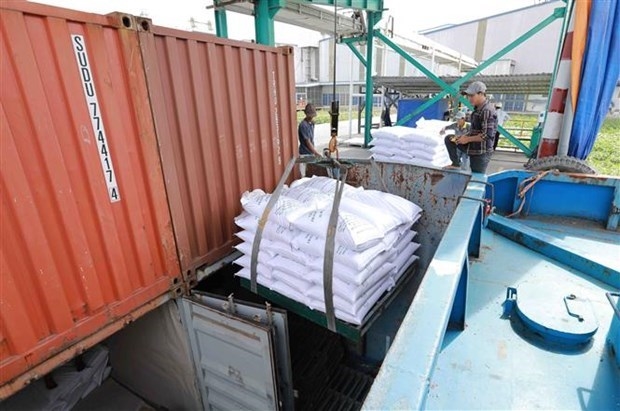 |
| Illustrative image (Photo: VNA) |
The Strategy on Development of Vietnam's Rice Export Markets until 2030 sets the targets of improving the value of exported rice, and reducing export volume by 2030 to about 4 million tonnes with a turnover of about 2.62 billion USD.
The Ministry of Agriculture and Rural Development reported that last May, Vietnam shipped abroad some 1 million tonnes of rice valued at 489 million USD, raising rice export volume and value in the first five months of this year to nearly 3.9 million tonnes and 2.02 billion USD, representing year-on-year increases of 40.8% and 49%, respectively.
In the first four months of this year, the Philippines was Vietnam’s biggest rice importer, making up 42.4% of the market share.
Among Vietnam’s 15 biggest rice buyers, Indonesia experienced the sharpest rise in value (26.3 times), according to the ministry.
Under the strategy, Vietnam's rice sector will also increase exports of high-quality rice. Specifically, between 2023 and 2025, the proportion of low- and medium-grade white rice will not exceed 15%; high-grade white rice will account for about 20%; fragrant rice, japonica rice and specialty rice 40%; sticky rice 20%; rice products with high added value such as nutritious rice, parboiled rice, organic rice, rice flour, rice-processed products, rice bran and some other rice by-products 5%; and rice with brand names 20%.
Nguyen Van Thanh, Chairman and CEO of Phuoc Thanh IV Trading - Production Company Limited, said the adjustments are suitable, explaining that the Mekong Delta, Vietnam's rice bowl, reduced the number of rice crops to only one from three.
Experts said intensive processing will help Vietnam raise its rice value by multiple times, noting it requires investment in science-technology to put the grain on market shelves in Europe, the US, Canada, Japan and the Republic of Korea (RoK).
Deputy Minister of Agriculture and Rural Development Phung Duc Tien said up to 85% of Vietnamese rice varieties are high-quality ones. Therefore, prices of Vietnamese rice have exceeded those of Thailand to stand at 485-495 USD per tonne.
Given requirements of markets and free trade agreements, the research of high-quality rice varieties with affordable prices has proven effective in rice production, especially in terms of food security, he said./.